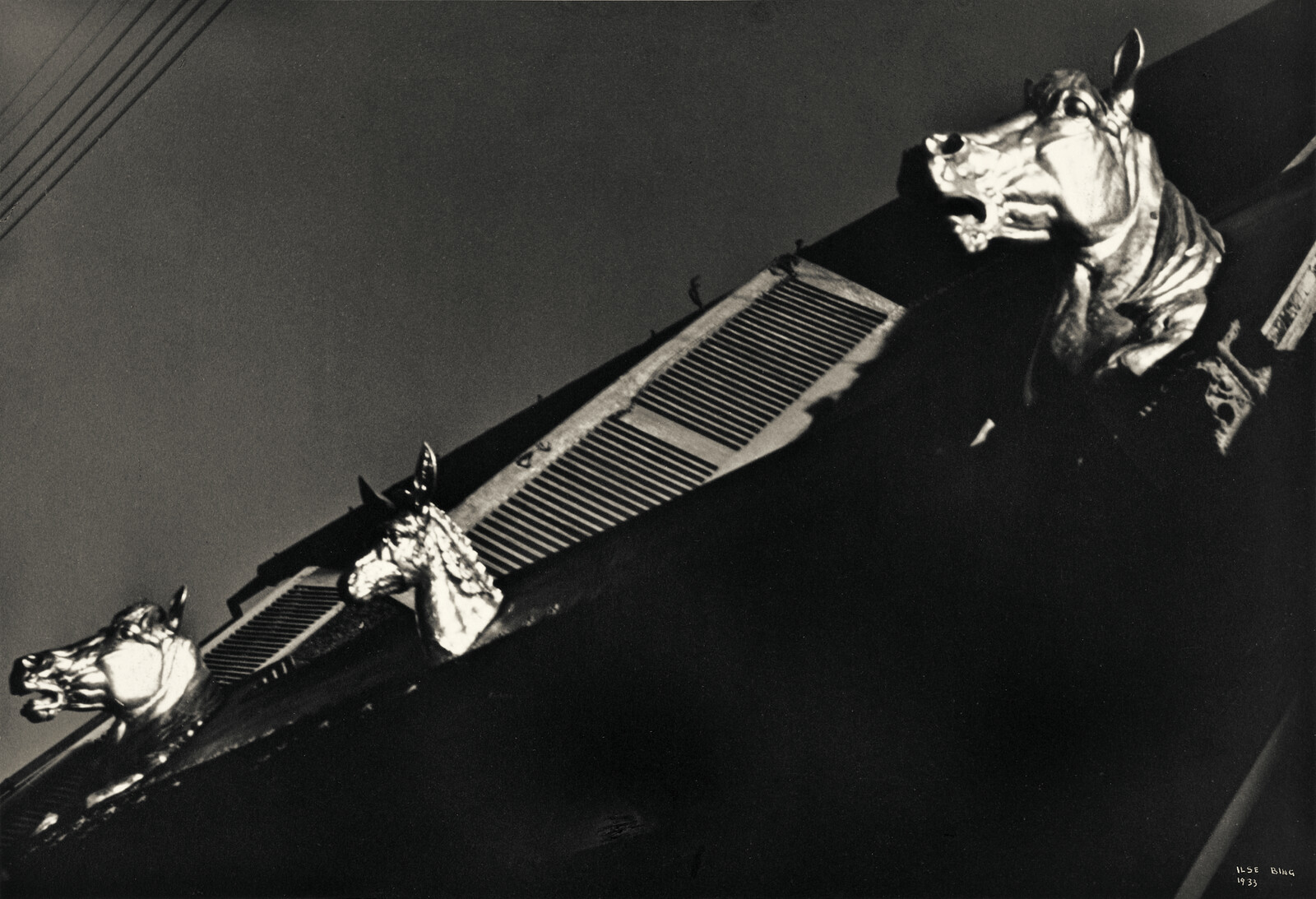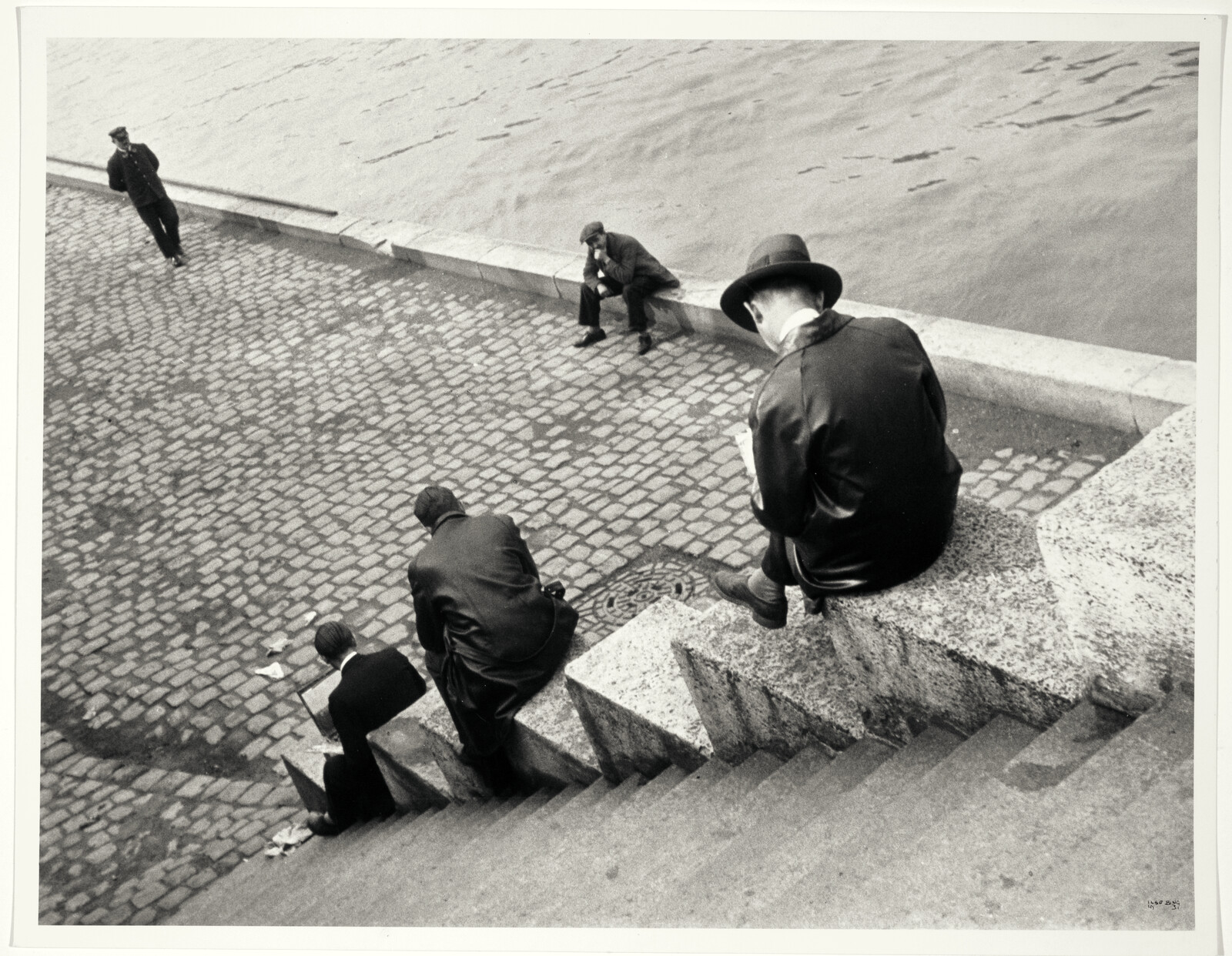September 23, 2022–January 8, 2023
Paseo de Recoletos, 23
28004 Madrid
Spain
With the current exhibition Fundación MAPFRE presents the most comprehensive retrospective to date in Spain of photographer Ilse Bing (Frankfurt, 1899–New York, 1998). Produced by Fundación MAPFRE and curated by Juan Vicente Aliaga, Associate Professor at the Universitat Politècnica de València, the exhibit offers a complete survey of this artist’s photographic oeuvre, from 1929 to the 1950s.
Ilse Bing’s artistic career was in part determined by the cities in which she lived and worked: Frankfurt prior to the 1930s, Paris in that decade and post-war New York where she above all experienced the status of enforced emigré. However, her work cannot easily be located within the photographic and cultural trends that she encountered during her lifetime although it was certainly enriched by all of them. Bing’s output was influenced by Moholy-Nagy’s Das Neue Sehen (The New Vision) and the Weimar Bauhaus, by André Kertész and by Man Ray’s Surrealism. As the exhibition’s curator has observed: “Bing’s position escapes any strict norms or visual orthodoxy. In this sense, we are dealing with a very singular view and conception of photography in which modernity and formal innovation go hand in hand with a humanist disposition within which a social conscience nestles.”
Ilse Bing was born in Frankfurt on March 23, 1899 to a middle-class Jewish family. She took her first photographs at the age of fourteen. Self-taught in this field, she realized that this would become her principal activity when she began photographing to illustrate her doctoral thesis. Bing studied mathematics and physics before opting for art history. In 1929 she gave up her university studies and, armed with her inseparable Leica, devoted herself to photography for the next thirty years. In 1930 she moved to Paris where she continued active as a photojournalist while also producing her own, more creative work, gradually becoming one of the leading representatives of modern French photography. In 1931 she met Hendrik Willem van Loon who promoted her work in New York and the following year she held her first exhibition there at the Julien Levy Gallery. In 1941 and with the advance of National Socialism, Bing moved to New York with her husband, the pianist Konrad Wolff. Two decades later, at the age of 60, she ceased taking photographs and focused her attention on making collages, abstract works, drawings and also poetry writing. Ilse Bing died in New York in 1998.
She belonged to a generation of women photographers who, for the first time, achieved a degree of visibility in the world of art and culture, including figures such as Germaine Krull, Florence Henri, Laure Albin-Guillot, Madame d’Ora, Berenice Abbott (the subject of an exhibition by Fundación MAPFRE in 2019), Nora Dumas and Gisèle Freund.
The exhibition, which includes 190 photographs in addition to documentary material, is organized into ten sections which together offer a chronological and thematic survey of Bing’s career. It benefits from important loans from the following collections and institutions:
Collection of Michael Mattis and Judith Hochberg, New York; International Center of Photography, New York; Galerie Karsten Greve, Saint Moritz, Paris and Cologne; Art Institute of Chicago; Galerie Berinson, Berlin; Museum of Modern Art (MoMA), New York; Victoria & Albert Museum, London; Bibliothèque Kandinsky, Centre Pompidou, Paris; National Gallery of Art, Washington D. C.; Edwynn Houk Gallery, New York; Metropolitan Museum of Art, New York; Musée Carnavalet, Paris; Biblioteca y Centro de Documentación. Museo Nacional Centro de Arte Reina Sofía, Madrid; Whitney Museum of American Art, New York; Bibliothèque Nationale de France, Paris; Galerie Le Minotaure, Paris; George Eastman Museum, Rochester, New York; and James Hyman Gallery, London.
Following its closing in Madrid, the exhibition will be shown at KBr Fundación MAPFRE Barcelona, from February to May 2023.




